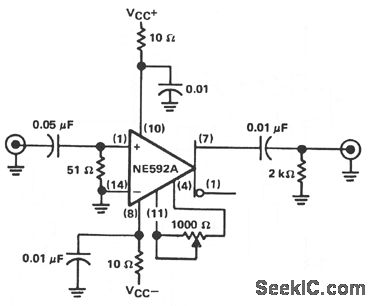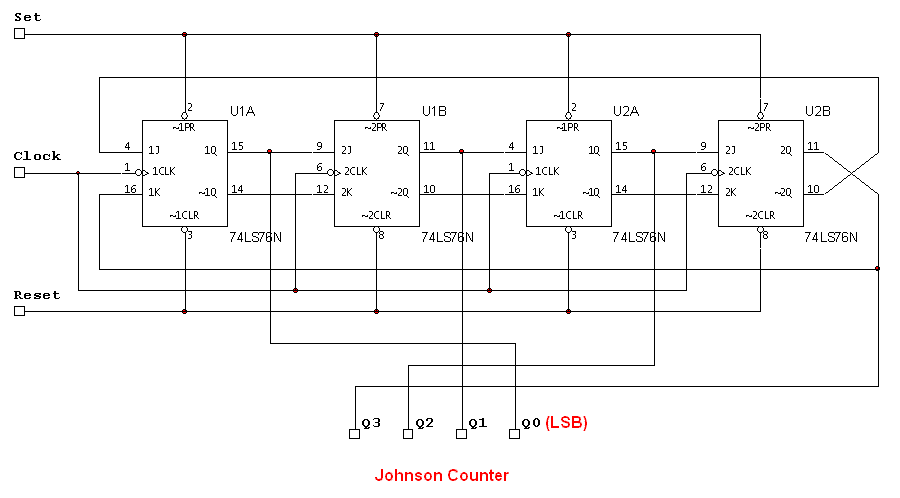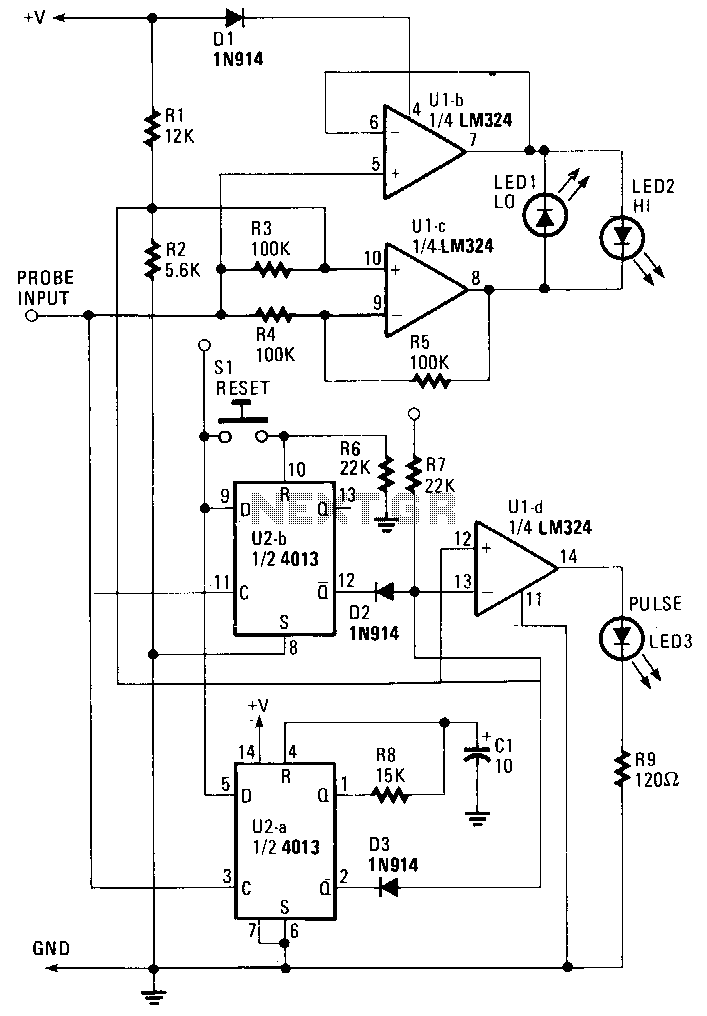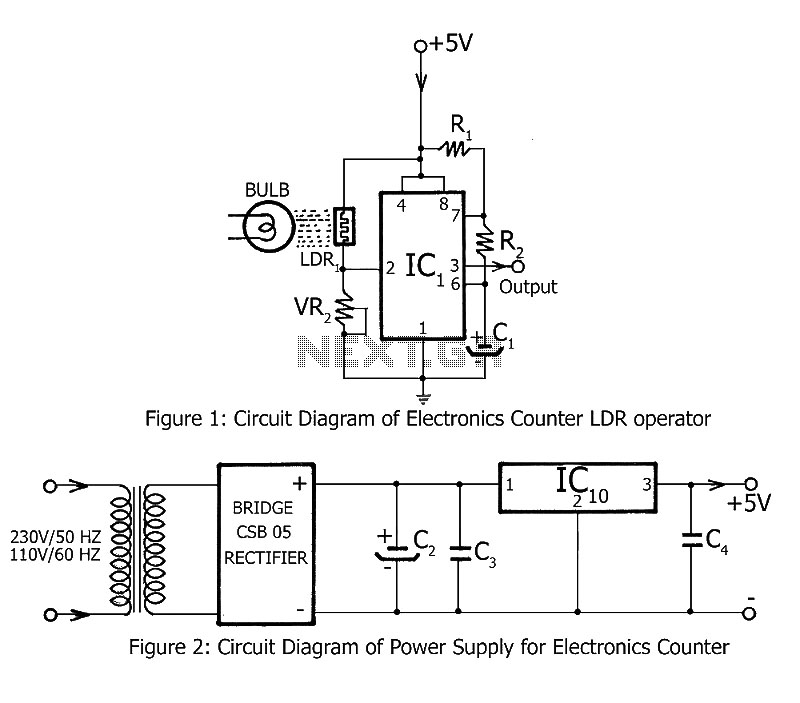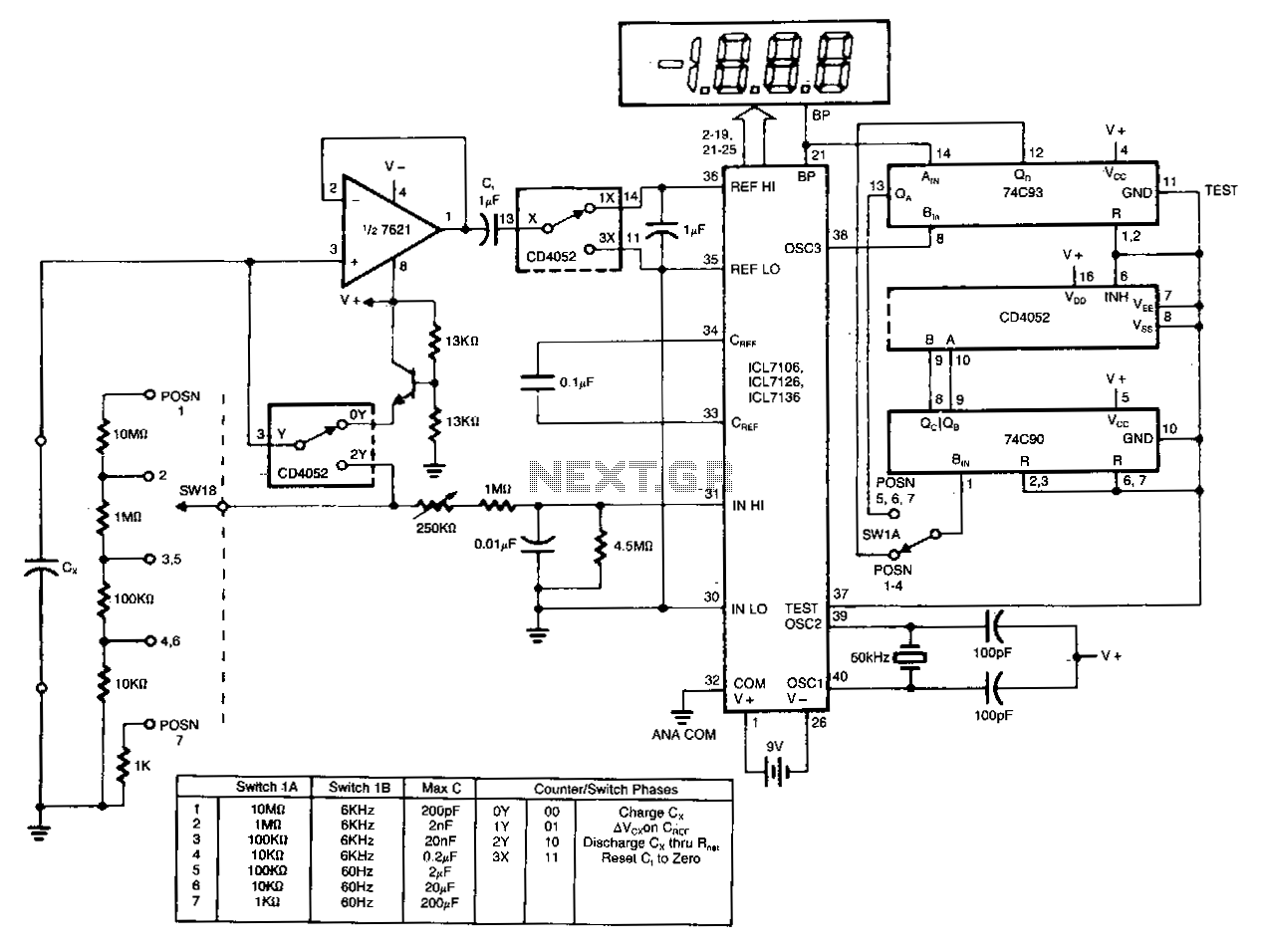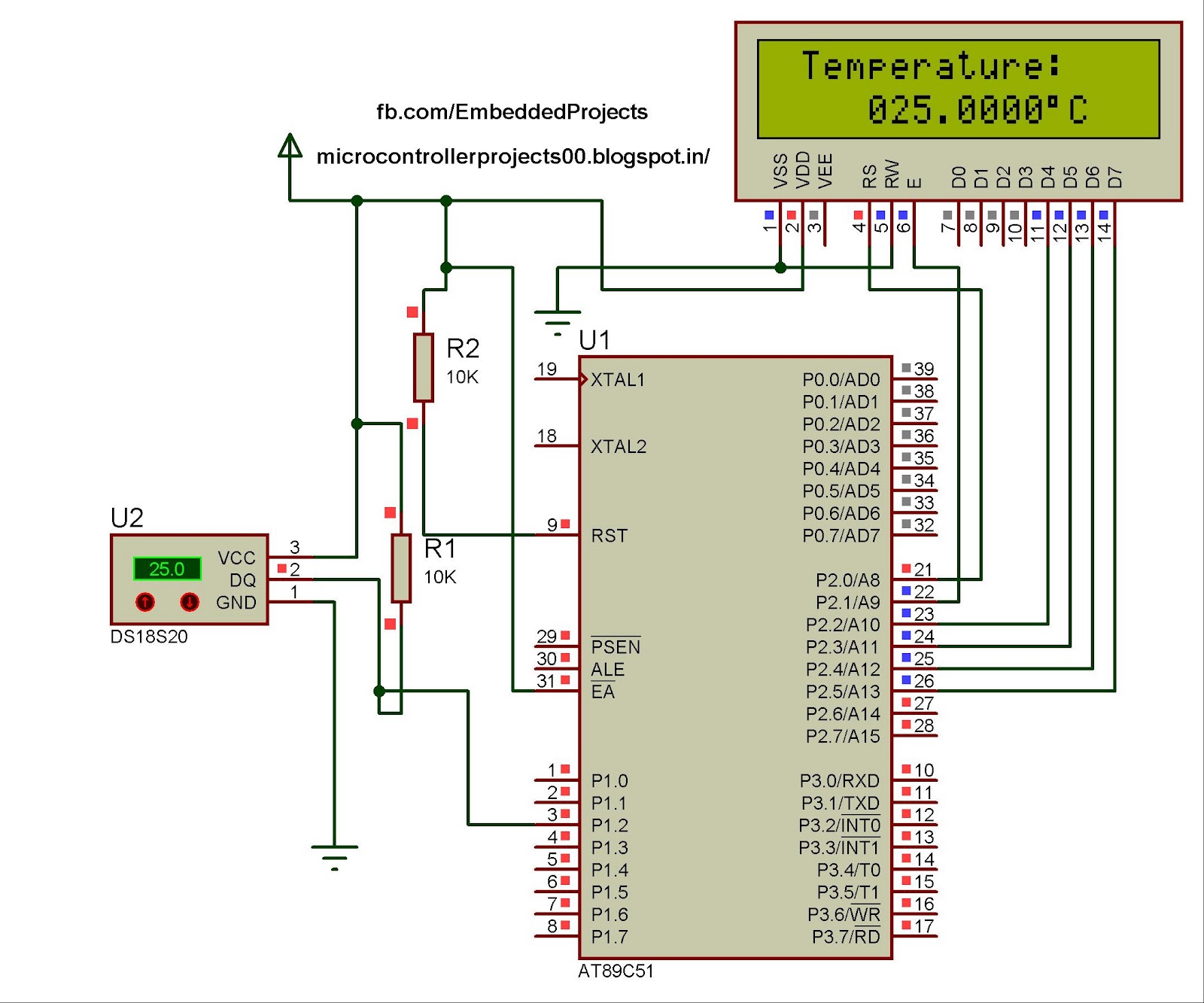
digital step km counter with
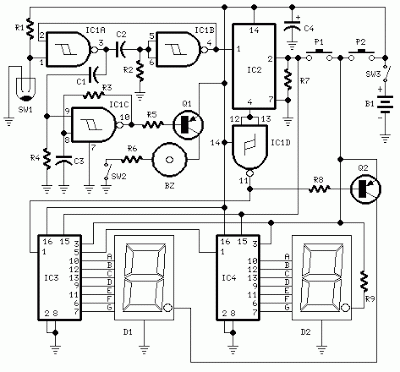
This circuit measures the distance traveled during a walk. The hardware is housed in a small box that can be placed in a pants pocket. The display is designed as follows: the leftmost display D2 (the most significant digit) shows distances from 0 to 9 kilometers, with its dot always illuminated to separate kilometers from hectometers. The rightmost display D1 (the least significant digit) indicates the number of hundred meters, with its dot lighting up after every 50 meters of walking. A beeper, which can be turned off, signals each unit of count, occurring every two steps. A standard step is estimated to measure approximately 78 centimeters, meaning the LED indicating 50 meters will illuminate after 64 steps (or 32 operations of the mercury switch). The display will show 100 meters after 128 steps, and so forth. To conserve battery, the display only lights up upon request by pressing button P2. To prevent accidental resetting of the counters, both pushbuttons must be pressed simultaneously to reset the circuit. While this device is not a precision meter, its degree of approximation has been deemed acceptable for its intended use. The critical factors for accurate operation include the proper placement of the mercury switch within the box and the adjustment of its incline.
The circuit described operates as a pedometer to measure walking distance through a combination of displays and sensors. The heart of the system is a microcontroller that processes input from a mercury switch, which detects movement. The mercury switch is strategically positioned to ensure it activates with each step taken.
The leftmost display D2 is a seven-segment LED display capable of showing digits from 0 to 9, representing kilometers. The rightmost display D1 serves a similar purpose but is dedicated to the hundreds of meters, allowing for a clear distinction between kilometers and smaller distance increments. The continuous illumination of the dot on D2 serves as a visual cue for users, indicating the unit of measurement being displayed.
For auditory feedback, a beeper is incorporated into the design, providing confirmation of each counted unit. This feature can be disabled to suit the user's preference. The design accounts for the average step length of 78 centimeters, allowing the system to translate physical movement into digital distance measurements accurately.
The circuit employs a low-power design, activating the display only when necessary, which is achieved by the user pressing the pushbutton P2. This feature is essential for extending battery life, particularly in portable devices.
The reset functionality is designed with user error prevention in mind. Requiring both pushbuttons to be pressed simultaneously to reset the counters ensures that accidental resets do not occur during regular use.
Overall, while the device does not provide high precision, its design prioritizes usability and efficiency, making it suitable for casual users who wish to track their walking distances without the need for complex calibration or setup. Proper installation of the mercury switch and its angle is crucial for maintaining the accuracy of the distance measurements, highlighting the importance of careful assembly and testing during the device's initial setup.This circuit measures the distance covered during a walk. Hardware is located in a small box slipped in pants` pocket and the display is conceived in the following manner: the leftmost display D2 (the most significant digit) shows 0 to 9 Km. and its dot is always on to separate Km. from hm. The rightmost display D1 (the least significant digit) sh ows hundreds meters and its dot illuminates after every 50 meters of walking. A beeper (excludable), signals each count unit, occurring every two steps. A normal step was calculated to span around 78 centimeters, thus the LED signaling 50 meters illuminates after 64 steps (or 32 operations of the mercury switch), the display indicates 100 meters after 128 steps and so on. For low battery consumption the display illuminates only on request, pushing on P2. Accidental reset of the counters is avoided because to reset the circuit both pushbuttons must be operated together.
Obviously, this is not a precision meter, but its approximation degree was found good for this kind of device. In any case, the most critical thing to do is the correct placement of the mercury switch inside of the box and the setting of its sloping degree
🔗 External reference
The circuit described operates as a pedometer to measure walking distance through a combination of displays and sensors. The heart of the system is a microcontroller that processes input from a mercury switch, which detects movement. The mercury switch is strategically positioned to ensure it activates with each step taken.
The leftmost display D2 is a seven-segment LED display capable of showing digits from 0 to 9, representing kilometers. The rightmost display D1 serves a similar purpose but is dedicated to the hundreds of meters, allowing for a clear distinction between kilometers and smaller distance increments. The continuous illumination of the dot on D2 serves as a visual cue for users, indicating the unit of measurement being displayed.
For auditory feedback, a beeper is incorporated into the design, providing confirmation of each counted unit. This feature can be disabled to suit the user's preference. The design accounts for the average step length of 78 centimeters, allowing the system to translate physical movement into digital distance measurements accurately.
The circuit employs a low-power design, activating the display only when necessary, which is achieved by the user pressing the pushbutton P2. This feature is essential for extending battery life, particularly in portable devices.
The reset functionality is designed with user error prevention in mind. Requiring both pushbuttons to be pressed simultaneously to reset the counters ensures that accidental resets do not occur during regular use.
Overall, while the device does not provide high precision, its design prioritizes usability and efficiency, making it suitable for casual users who wish to track their walking distances without the need for complex calibration or setup. Proper installation of the mercury switch and its angle is crucial for maintaining the accuracy of the distance measurements, highlighting the importance of careful assembly and testing during the device's initial setup.This circuit measures the distance covered during a walk. Hardware is located in a small box slipped in pants` pocket and the display is conceived in the following manner: the leftmost display D2 (the most significant digit) shows 0 to 9 Km. and its dot is always on to separate Km. from hm. The rightmost display D1 (the least significant digit) sh ows hundreds meters and its dot illuminates after every 50 meters of walking. A beeper (excludable), signals each count unit, occurring every two steps. A normal step was calculated to span around 78 centimeters, thus the LED signaling 50 meters illuminates after 64 steps (or 32 operations of the mercury switch), the display indicates 100 meters after 128 steps and so on. For low battery consumption the display illuminates only on request, pushing on P2. Accidental reset of the counters is avoided because to reset the circuit both pushbuttons must be operated together.
Obviously, this is not a precision meter, but its approximation degree was found good for this kind of device. In any case, the most critical thing to do is the correct placement of the mercury switch inside of the box and the setting of its sloping degree
🔗 External reference
